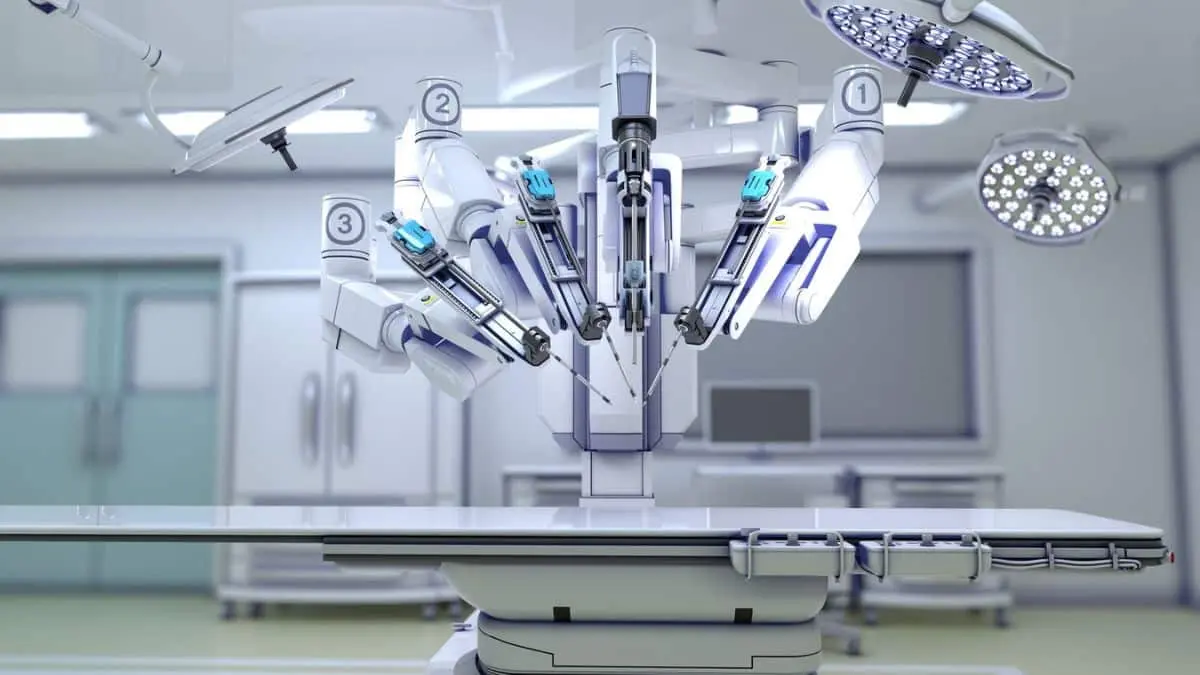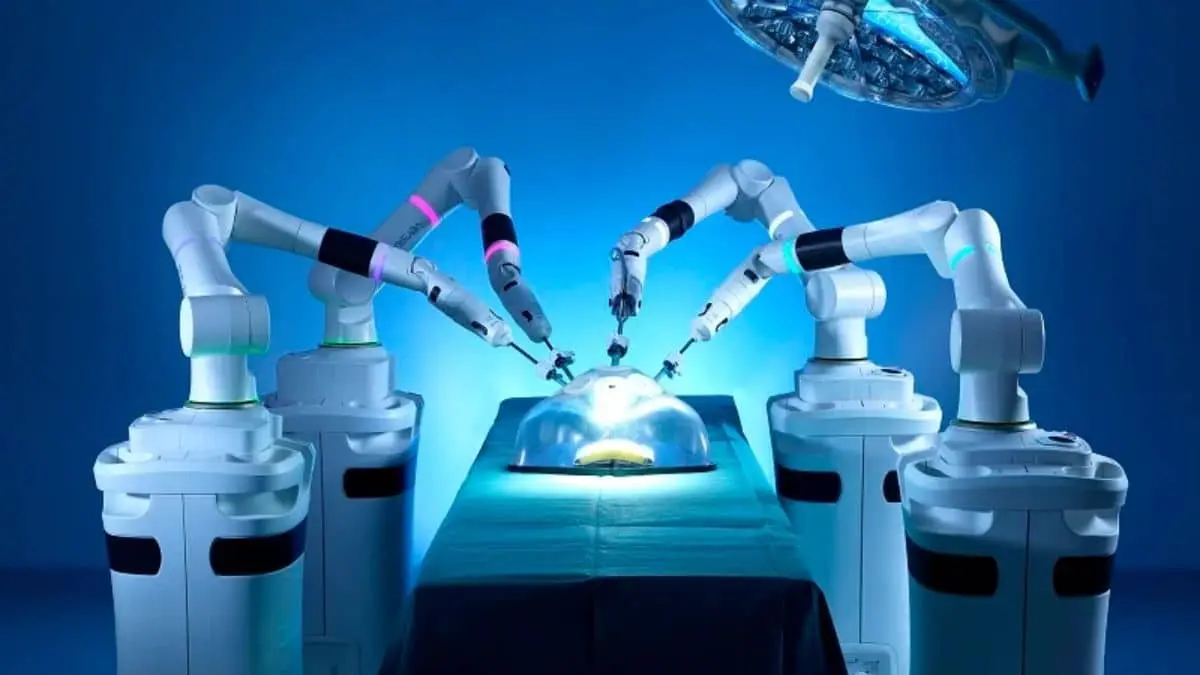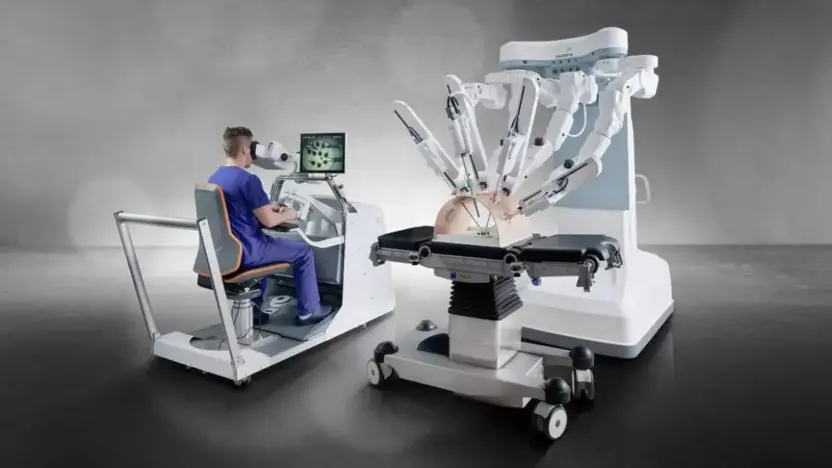Robotic surgery, a concept once confined to the realms of science fiction, has now become a tangible reality in the medical landscape. This ground-breaking approach combines human precision with robotic efficiency, allowing surgeons to perform complex procedures with unprecedented accuracy and control. As the boundaries of medical science continue to expand, robotic surgery is emerging as a transformative force, redefining the possibilities in surgical care and promising a future where patient outcomes are enhanced to levels previously unimaginable. In this article “How Robotic Surgery Can Transform the Medical Landscape”, we’ll explore the fascinating world of robotic surgery, its potential impact, and how it is poised to redefine the future of medicine.”
How Robotic Surgery Can Transform the Medical Landscape
Current State of Robotic Surgery
The current state of robotic surgery showcases a fascinating blend of technology and medical expertise. It is reshaping traditional surgical practices, providing new possibilities and challenges alike. While there is impressive progress, some limitations need to be addressed to make it a prevalent choice across various regions and medical specialties.
A. Technologies Used
- Robotic Arms: Manipulators that provide surgeons with enhanced control.
- 3D Visualization Systems: Advanced imaging that offers depth perception and clarity.
- Haptic Feedback Systems: Providing tactile sensations to the surgeon for a realistic touch.
- Telecommunication: Enabling remote surgeries and consultations.
B. Common Procedures Performed
- General Surgery: Appendectomies, gallbladder removals, etc.
- Cardiac Surgery: Heart valve replacements and repairs.
- Urological Procedures: Including prostatectomies and kidney surgeries.
- Orthopedic Surgeries: Joint replacements and spinal surgeries.
C. Regions/Countries Leading in Adoption
- United States: Pioneering in research and application.
- United Kingdom: Implementing robotic surgery in the NHS.
- India: Emerging market with growing adoption in metropolitan hospitals.
- Other Notable Countries: Including Japan, Germany, and South Korea.
D. Advantages and Limitations
Advantages
- Precision: Enhanced accuracy in surgical procedures.
- Flexibility: Greater range of motion for complex surgeries.
- Less Invasiveness: Smaller incisions leading to quicker recovery.
- Remote Accessibility: Enabling surgery in distant locations.
Limitations
- High Costs: Initial investment and maintenance.
- Learning Curve: Requires specialized training and experience.
- Technical Issues: Possibility of malfunctions or errors.
- Lack of Haptic Sensation: Some systems may lack full tactile feedback.

Future Prospects and Innovations
The future of robotic surgery holds promising prospects and ground-breaking innovations that have the potential to redefine medical care globally. Through collaborative efforts, technological advancements, and mindful consideration of ethical and practical aspects, robotic surgery is poised to extend its reach and impact. The next phase of development in robotic surgery is likely to see even greater integration with AI and expansion into new medical domains, shaping the future of healthcare.
A. Research and Development
- Investment in New Technologies: Governments and private sectors investing in cutting-edge research.
- Collaborations: Universities and medical institutions partnering for innovative projects.
- Regulatory Pathways: Developing clearer guidelines for the safe implementation of new robotic surgery technologies.
B. Collaboration with AI and Machine Learning
- Predictive Analysis: Utilizing AI to predict surgical outcomes and create personalized surgical plans.
- Real-time Assistance: Machine learning algorithms providing real-time guidance during surgery.
- Postoperative Care Automation: Using AI to monitor patient recovery and alert medical staff to potential issues.
C. Expansion into New Medical Fields
- Pediatric Surgery: Adapting technologies for use in delicate, specialized children’s surgeries.
- Mental Health Treatments: Exploring robotic interventions for mental health conditions, such as deep brain stimulation for depression.
- Emergency Interventions: Developing robotic systems for immediate care in critical situations.
D. Potential Impact on Global Health Care Systems
- Accessibility: Making robotic surgery accessible to underserved regions, including rural areas in India and other developing countries.
- Affordability: Working on cost-effective solutions to bring the technology to a broader patient population.
- Standardization: Creating international standards to ensure uniform quality and safety.
- Ethical Considerations: Addressing ethical concerns such as data privacy, patient consent, and potential biases in AI algorithms.
E. Personalized and Precision Medicine
- Customized Treatment Plans: Using patient-specific data to tailor surgical approaches.
- Genomic Insights: Integrating genetic information to guide personalized interventions.
- Patient Engagement: Empowering patients through technology to actively participate in their care.
Impact on Medical Professionals
The impact of robotic surgery on medical professionals is multifaceted, offering exciting opportunities for growth and innovation but also presenting challenges that must be thoughtfully navigated. The integration of these technologies into the medical field is not just about machines; it’s about people, their skills, ethics, emotions, and the future of healthcare practice.
A. Training and Skill Development
- Specialized Education: Medical professionals must undergo specific training to operate robotic systems, often requiring collaboration between medical schools, hospitals, and technology providers.
- Continuous Learning: The rapid evolution of technology necessitates ongoing education to stay current with the latest tools and techniques.
- Simulation Practice: Utilization of virtual reality and simulation tools for hands-on practice without patient risks.
B. Enhanced Precision and Control
- Greater Accuracy: Robotic systems provide greater control and precision, allowing for intricate surgeries that might otherwise be highly challenging or impossible.
- Ergonomic Benefits: Designed to minimize physical strain on surgeons, leading to less fatigue and potentially enhancing performance.
- Real-time Data Integration: Surgeons can access relevant patient data during the procedure, facilitating decision-making.
C. Potential Job Displacement and Creation
- Job Transformation: Traditional roles may evolve, requiring new skill sets and potentially displacing some positions.
- New Opportunities: Emergence of new roles, such as robotic surgery technicians, software developers, and specialized trainers.
- Collaboration between Fields: Increased need for interdisciplinary collaboration between medical practitioners, engineers, and data scientists.

Conclusion
Robotic surgery stands as a symbol of the potential for technology to revolutionize healthcare. Its continued evolution promises to extend its benefits to more diverse patient populations and medical specialties. As we look to the future, the focus must remain on harnessing this technology responsibly, innovatively, and ethically. Collaboration across sectors, including policymakers, researchers, medical professionals, and industry leaders, will be essential to fully realize the transformative potential of robotic surgery.
Summary of Key Findings
- Technological Advancements: Robotic surgery has evolved rapidly, offering unprecedented precision, flexibility, and accessibility.
- Impact on Medical Professionals and Patients: Benefits and challenges exist for both healthcare providers and patients, including improved outcomes and potential ethical concerns.
- Global Reach: Though led by developed nations like the US and UK, emerging markets like India are embracing this technology, providing insights into diverse implementation strategies.
- Innovations on the Horizon: Collaborations with AI, expansion into new medical fields, and increased focus on accessibility and affordability are defining the future.
Also Read: Are We Moving Too Fast In The Field of AI?



